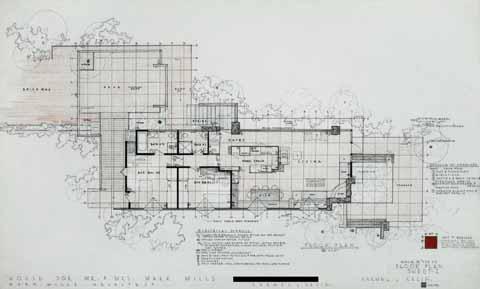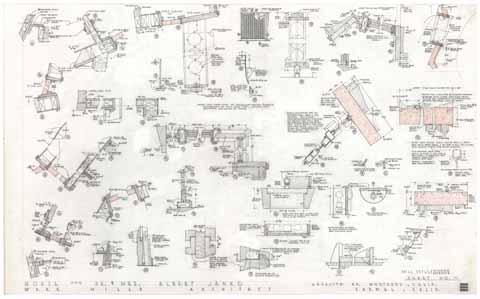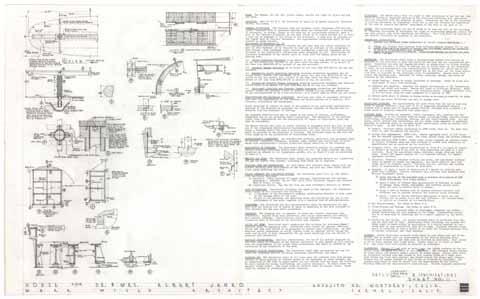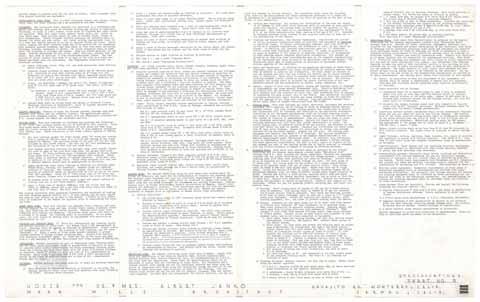...against damage to plaster work and the work of others. Leave premises clean from plaster material and equipment. Miscellaneous Metal Work: This includes fireplace damper, and screen, dining table legs, and floor sleeves. Use 9 GA expanded Pl. for vent screens. Carpentry: The Contractor shall assemble all materials in a craftsman-like manner with special care given to accurate fitting and joining of materials. Generally, no paint is used; rather, clear types of finishes and light stains are employed. Wood with grade marks, grease, water marks, etc. cannot be used where seen. Wood putties cannot be used to conceal holes, cracks or poor workmanship. Neatly finished interior paneling and cabinets shall be matched for grain and wood color. All finish nailing (galvanized) shall be in a neat and regular pattern so as not to require filled set holes. Doors, vents, drawers and other operable items are to be well-fitted and assembled with properly applied hardware, and they shall be free from warp, shrinkage, splicing binding, looseness or rattle. No finish carpentry shall be done until the building is enclosed and heated. Keep all finish material dry and clean. provide protection for all sills, jambs, mullions, cabinet tops and faces. Mill work as detailed is from stock-dimensioned lumber. The simplicity of detail permits this work to be done on the site on a table saw. Smooth saw-faced cuuts are acceptable. See "Segregated Alternatives" for alternative surfaces. a) Jambs, mullions, sills, trims, etc. are from kiln-dried clear evrtical grain Douglas Fir. b) Interior finish surfaces on wood-framed walls on 1/4'' vertical grain D.F. Interiors of stud wall closets shall be 1/4'' clear D.F. ply. Interiors of closets and cabinets with radius laminated walls shall be of clear 3/8'' D.F. ply as detailed. Select plywood paneling for tone and match grain accordingly. c) Doors: (a) Exteriors - Garage: See detail 6/5 House: (3 required) with 3/4'' V.G.D.F. each side of 3/4'' glude core. See detail 32/10 and 39/10. b) Interior: 4 pella doors: Series 358 with factory finish oak veneer. Doors to W.C. compartments are: 1 3/8'' x 2'4'' x 6'8'' solid core doors with V.G.D.F. veneer. All 4'8'' high doors are 1 3/8'' V.G.D.F. ply doors. Cabinet doors less than 5'8'' high are 3/4'' core with V.G.D.F. d) Cabinet Work shall be custom grade per manual of millwork titled: "Woodwork Institute of California." Faces of exposed cabinets shall be of 3/4'' material with V.G.D.F. surfaces Plastic Surfaces: Formica or equal for kitchen counter, storage room sink counter, work bench, and one lavatory counter. Two manufactured marble counters with integral basins. See detail 15/9 and "Segregated Alternatives" #3. Submit samples for Owner and Architect approval. Roofing Work: This work consists of providing and applying the following: a) 1 1/2'' thick foam urethane scored and cut to conform to roof contours. Cover only areas above house floor areas exclusive of arch beams and dome ring. Seal all joints including the outside edges with 6'' wide asbestos reinforced felt roofing tape. Embed insulation in hot steep asphalt applied at 30#/sq. minimum. b) All roof surfaces except for those listed under "c" below are covered with 3 layers of 15# felt laid in a uniform mop coating of hot steep asphalt at 30#/sq. Use starting strips of cut felt 12'' and 24'' wide followed by full width of lap so felt does not touch felt. c) Coat asphalt emulsion covering the skylight ring, roof arches, draped bar curb to edge of the roof brim ring slab, the garage roof curbs and beams. To these surfaces apply 2 separate layers of Yellow Jacket fiber glass with a 6'' lap onto the hot-mopped roof surfaces. Embed fiber glass in separate layers of asphalt emulsion. Allow each coat of emulsion to dry between coats. Paint these surfaces with one coat of Rexkote Spectra Desert Sand as manufactured by Flintkote. d) Apply galvanized sheet metal flashing as detailed but provided under "Sheet Metal, Heating, and Plumbing". Asphalt prime all embedded surfaces of flashing. Set flanges and lapped joints in a troweled coating of asbestile cement as manufactured by J.M. on top of the rock-free roof membrane. Cover the 6'' fiber glass laps of ''c'' above and metal flashing flanges with a hot-mopped double ply strip of 15# felt. e) On steeper areas of draped roof, apply a salt and pepper coating of rooking orck set in hot steep asphalt (25#/Sq.) f) Apply a floor coat of asphalt (60#/sq.) over the entire roof and cover at 400#/sq. except for a one foot wide strip along the edges of the flat roof of house. Use Gill rock. The roofing contractor shall guarantee workmanship and materials of roofing and roof flashing against defects for a 10 year period, and he shall repair and replace said defects at no cost to the Owners. A letter to this effect shall be submitted to the Owners for approval prior to undertaking the roofing work. Sheet Metal Work: This work includes the required ducts, housing, and caps for the exhaust fan of range and spa, clothes dryer, sauna, fireplace flashing, sill flashing, and copper fascia inserts. Exclude sheet metal work connected with heating and plumbing. Galvanized sheet metal work shall be a minimum of 20 gauge. All flashing shall be acid-etched. Do not prime coat. All butt joints on roofing shall be lap-caulked with asbestile as manufactured by J.M. Caulking and Membrane work: 1) Treat all construction and flashing joints but exclude caulking of glass work. Use Rubber caulk 7,000 manufactured by P.R.C. Caulking shall be applied as directed by manufacturer. Submit colors for Architect's approval. 2) For caulking of roof flashing, see "d" under "Roofing." 3) Apply 2 coats of fiber glass asphalt emulsion to ground covered surfaces of garage storage retaining wall. Protect from backfill with Moiststop Sisalkraft Paper. 4) Cover the top of the house sub slab with a 2 ply membrane of 15# felt full-mopped with steep asphalt @ 30#/sq/ply. Insulation: Thermal insulation of roof is considered under "Roofing Work". Use 3 1/2'' fiber glass foil-backed batts as manufactured by Zonolite or equal to insulate walls of W.C. compartments and walls containing plumbing pipes. Cover the interior of house block walls with 1 1/2'' thick foil-backed urethane as detailed. Apply black vinyl foam tape #570 (3/16 x 3/8'') manufactured by Norton to the stops of exterior doors and to door of W.C. compartments. Staple tape in place. Painting: Furnish material and labor required to treat all surfaces described below: a) When air-dried or kiln-dried material is delivered to the site, the General Contractor shall prime coat said material with clear "Chemstop for Wood." Creosote where required. b) Paint (2 coats) all exposed metal as directed by Architect. The color shall approximate the color of adjacent materials c) Paint (1 coat) roof areas of "c" under 'Roofing Work." Use an acrylic latex paint. Color shall approximate roofing rock. Submit sample for Architect's approval. d) Paint all exterior wood surfaces with 2 coats of semi-transparent stain as directed by manufacturer, Olympia. Color shall blend with masonry. e) Apply one coat of semi-transparent stain by Olympia to all interior wood surfaces, followed by a finish coat of flat "heirloom" manufactured by McCloskey. Steel wool surfaces. f) Apply one coat of Flecto Verethane semi-gloss to exposed wood surfaces in kitchen and bath areas, to exterior and interior doors, ledges, and book shelves. g) Apply 2 coats of Flecto Verethane semi-gloss to the dining table, the plaster walls of spa-shower and tub shower, and the floor slabs of entry and spa shower. h) Stipple plastic of light fixtures as directed by Architect. i) See item G - 1 and 2 under "Concrete Work." j) See item #4 under "Segregated Alternatives." Hardware: a) Rough includes nails, bolts, screws, anchors, brackets, angle irons, and such items necessary to construct the building. b) Finished hardware consists of door, drawer and cabinet hardware and fittings. Supply and install all necessary door and cabinet hardware as specified or indicated on Drawings. No extra cost will be allowed because of changes or corrections necessary to facilitate installation of any hardware. The following hardware schedule is intended to cover all wooden doors and moveable parts and to establish a type and standard of quality. The hardware supplier shall examine Plans and Specifications for this project, and furnish proper hardware for all openings whether listed or not. if there are any omissions in the hardware groups in regard to regular doors, they shall be brought to the Architect's attention for instructions prior to bid opening; otherwise, the list will be considered as complete. No extra will be allowed. All keying shall be as directed by the Owners. All hardware finish is oil-rubbed Bronze, US 10B unless it is unavailable. Milled towel bars, paper holders and door pulls are provided by the General Contractor. c) Items: Butts, hinges, magnetic catches manufactured by Stanley, Mortise bolts manufactured by Ives #155. Locks by Schlage, threshold and automatic door bottoms by Pemko. Set #1 (one entrance door) 1 1/2 pair butts 4'' x 4'' F179, lockset D51PD SPH/ply 3 3/4'' BS. threshold # 145-AD. Set #2 (garage-shop door) 1 1/2 pair butts 3 1/2'' x 3 1/2'' F179, lockset A51PD. Set #3 (2 exterior bedroom doors) 1 1/2 pair butts 4'' x $2 F179, NRP, lockset D310 Set #4 (9 interior doors to rooms) 1 pair butts 3 1/2'' x 3 1/2'' F179, roller latch Ives #336, mortise bolt. Automatic door bottoms Pemko #426N on doors to W.C. compartments. Set #5 (closet doors) butts 3 1/2'' x 3 1/2'' F179, wood pulls, roller latch by Ives #336 if door closes against a jamb; otherwise, us magnetic catch by Stanley #45. Set #6 (sliding door hardware by Holmes) Includes track bent on a radius, roller brackets, dead lock, ring pulls and floor guides. Note: circular windows and arch door frames with hardware as manufactured by Fentron are provided and installed by Glass Contractor. Folding doors with hardware as manufactured by pella are provided and installed by the General Contractor. d) Cabinet Hardware: Hinges #332 US10, magnetic catches #41 & 45, full extension drawer glides manufactured by KV # 1300 for bottom bin drawers in kitchen cabinets, adjustable shelf strips and clips #KV 255 where required, four towel slide racks, DV #793 e) Specialty items include clothes rods, shower curtain rods, toilet paper spindles, and sunken garbage can #A-A4 Health Guard as manufactured by Christe Concrete Products. Glazing Work: The General Conditions apply to work under this section which includes all materials and labor for the installation of interior and exterior glass. Use required glass thickness and type for structural requirements of pane sizes. Assume wind gusts to 8-0 mph. Glass shall be installed to comply with local and state codes and the NAAMM standards for clearance and setting dimensions. Glazing sealant shall be Vulken Polyurethane Sealant manufactured by Maneco. Submit color samples for Architect's approval. Final acceptance requires the work and materials to be free from defects such as leaks, rattles and dirt. Remove and replace scratched or damaged glass at no expense to Owners before final acceptance. a) Special Conditions: 1. All window glass shall be 5/8'' insulated glass except for stained glass provided by Owners. 2. Mirrors in baths and on 4 doors to closets #C-11 shall be 1/4'' polished plate glass, copper-back with ground edges. Secure to plywood with metal clips or mastic (no rosettes). 3. Provide plastic light diffusers as detailed. Use 3/16'' clear styrene pattern C-1 as manufactured by Panel Plastics, or equal. Submit sample for Owner-Architect approval. Semi-circular plastic (detail 48/10) shall be provided by General Contractor. Allow $4.00 each for purchase of material. 4. Provide and install a double acrylic dome (bronze - 91'' I.D.) manufactured by Masco or equal. (See detail 1/5). 5. Provide and install circular glass windows in anodized bronze frames as manufactured by Fenton. See details 52/10 and 53/10. Submit shop drawings for Architect's approval. Round windows required; 11 @ 4' diameter (10 to pivot), 4@2' diameter (4 to pivot). 6. Provide arched window and door in anodized bronze frames with hardware as manufactured by Fentron. See details 43/10 and 45/10. Submit shop drawings for Architect's approval. Mechanical work: the General Conditions apply under this division. Comply with rules and regulations of the National electric Code, Uniform Plumbing Code, Uniform Building Code, Uniform Mechanical Code, the recommendations of N.B.F.U., and local laws and regulations. These Plans and Specifications shall not be construed to permit work not conforming to these Codes. The Contractor shall furnish without extra charge any and all additional material and labor when required by compliance with these rules and regulations though the work not be mentioned in these particular Specifications or shown on the Drawings. The contractor shall secure and pay for any and all permits, licenses, fees and inspections required. He shall make all arrangements for utility services, and pay all costs not covered by Utility Company. The Contractor shall visit the building site, take his own measurements and other information pertinent to a proper bid. No allowance will be subsequently made for any error or omission on the part of the bidder in this connection. a) Cutting and repairing. All cutting for installation of the work and repair of all damage to work under other sections shall be included in work specified under this section. No cutting shall be done without the approval of the Architect. Said work shall be in conformance with the requirements of Title #21 of the State Administrative Code, Section #613 and #617 (f). Repaired or replaced surfaces shall conform to the original condition of same and to the satisfaction of the Owners. b) Drawings and Submittals. See General Conditions Contractors are invited to bid on available competitive makes of materials and equipment in addition to specified items. To obtain consideration, however, each item shall be listed as a proposed substitution, and difference in cost, if any, shall be stated. In addition, all proposed substitutions must be: (1) submitted within thirty days of following award of contract, (2) shown to Architect to be equal or superior in all respects to material specified, (3) accompanied by shop drawings and/or complete descriptive information. All changes required by or resulting from substitutions must be the complete responsibility of the Contractor and shall be made at no additional cost to the Owners. The Contractor shall make no substitutions of materials or equipment without written approval of the Architect. c) Tests and Guarantees. In addition to any guarantee mentioned in these Specification, this Contractor will leave installation in complete working order, free of defects in material and workmanship. He shall repair or replace at his own expense any part that may develop any defects due to faulty workmanship or materials. Tests shall be repeated after defects have been eliminated. Caulking screwed joints, cracks or holes with not be accepted. The heating equipment and system shall be adjusted for proper distribution of air temperature control and the elimination or drafts, noise, vibration, etc. d) Layout. Layout of duct work, equipment, piping and fixtures shown on Drawings is diagrammatic and shows general arrangement only. Should a Contractor fail to consult with the Architect concerning any complications in layout work that conflict with the interest of other work, said Contractor will be subject to relocating his work without cost to the Owners. Each mechanical contractor (including electrical) shall furnish and place sleeves in forms for concrete work for passage of all pipe plus covering. Pipe and sleeves through foundation walls shall be caulked water-tight with PRC 5,000. A. Heating Work: This work includes all labor, materials, equipment and services necessary for a complete job of heating as shown on Drawings and/or Specifications herein. All line voltage, wiring conduit and connections to motors and controllers will be furnished and installed by the electrical contractor. Directions of the equipment manufacturer. Hold all pipes and tubes in place with insulated adjustable ring hangers. Isolate al pipes and tubes from building materials with 3/8'' hair felt (after compression) or equal. The entire piping shall be pressure tested @ 100 psi minimum, and accepted by the Architect before the slab is poured. Insulate all out of the slab hot water pipes with 3/4'' wall thick Rubatex. Assist the electrician in wiring line voltage controls of the hot water system. Examine the job site. For heating plan, equipment and details, see Sheet #8 of Drawings. The heating contractor shall guarantee his work as covered in the General Conditions and in the General Requirements under "Mechanical Work." In addition, this contractor, prior to undertaking this work, shall submit to the Owners a letter stating the above guarantee requirements, and that he shall repair or replace at his own expense any part of the heating system due to faulty material or workmanship and without evidence of damage or patching to existing surfaces. B. Plumbing Work. Work under this contract shall be governed by the General Conditions and the General Requirements covered under "Mechanical Work" through Item #e. Work includes all labor, materials, fixtures and equipment required for the proper functioning of water and sewage systems. Coordinate plumbing work with other work specified and shown on Drawings. Collect vents so as to minimize the number of vents through the roof. Cut vent pipes at 4'' above roof. All valves shall be the product of a single manufacturer:Crane or an approved equal (125 psi of steam service rated). Gate valves shall be Crane #438 with lock shield keys. Keyed hose bibs are 3/4'' rough brass. Unions are Mueller #C-107 in copper piping; Stockham Figure 694 in galvanized maleable iron, and Epco dielectric unions where copper connects to steel. Provide and install a 3,000 gallon concrete septic tank and drain field as required by the County Sanitary Department, and as noted on Plot Plan of Sheet #1. Consult with Architect as to location. Provide the necessary plumbing for equipment by Owners or contractor. Backfill and compact all excavations. Obtain and pay for plumbing permits including gas, and water connection fees. a) Testing. Water piping shall be tested at 100 psi for 8 hours without drop in pressure. Fuel piping shall be tested at 50 psi air pressure for 8 hours without drop in pressure. Soil waste and drainage systems @ 10' head of water (minimum) shall be held for 2 hours in a 2'' diameter stand pipe (minimum). Adjust and regulate all faucets, valves, water heating equipment, etc., and leave in perfect working order for Owners. b) Piping. Insulate all hot water pipes out of or under slab from heater to fixture with "Rubatex" (3/4'' wall thickness) or an approval equal. Take every precaution to minimize plumbing noises. Insulate supply and water pipe sizes with reduced fittings rather than using bushings or street elbows. Install unions on each branch line adjacent to each screwed valve, and on all lines connected to equipment. 1. Soil waste, drain and venting systems, use cast iron service weight underground; otherwise, ABS plastic DWV. Connect waste system to the septic system. 2. Water pipe: (a) Pipe under and within the building shall be copper, type K hard temper for underground, and type L for above ground. Solder joints with 95-5 soft solder and flux. Fittings and unions shall be streamline wrought copper by Crane or equal. (b) Pipe outside the building may PVC-1220 schedule 40 plastic pipe. (c) Install a water supply line with pump and pressure tank as noted on Sheet #1. Install a pressure reducer valve at the main, close to building. Fuel gas pipe from L.P. tank (see Note on Sheet #1) to hot water heater boilers and kindler shall be black steel schedule 40 A- 120 with 150# black malleable iron fittings. Install kindler in fireplace for future natural gas supply line. 3. For location of meters and ditch excavations, see Note on Sheet #1 of Drawings. 4. All hose bibs shall be 3/4'' and connected to the main supply ahead of the pressure reducing valve. See Sheet #1 of Drawings for location of same. c) Plumbing Fixtures: (Kohler, Jacuzzi, and twin Spa in color) Submit color chips for Owners' approval. 1. # W.C.s - Chaplain K-3390 ED with bidet seats mfg. by Rusco American Bidet Corporation in Los Angeles, California. 2. 1 lavatories - Caxton K-2210 (rimless) with Delta Trim #570 - P. 1 lavatory - Lady vanity K-2170 with Delta Trim #575-P. 3. 2 shower valves #1623 (less head) as mfg. by Delta, and 4 shower heads #1414-051 mfg. by American Standard. Each valve controls 2 shower heads. Set valves and heads as directed by Owners. 4. 1 6'Roman Bath mfg. by Jacuzzi with Delta Trim #633 (minus head) and shower head #1414-051 mfg. by American Standard. 5. 1 Twin Spa # 883 as mfg. by Soden Properties. Provided and installed by the General Contractor and plumbed by the plumbing contractor. 6. 1 kitchen sink stainless steel #TEQ-2243-A-GL mfg. by Just. Drill ledge for Delta Trim #175 and #710. 7. 1 storage room sink #KE 2233-B-GR mfg. by Just with Delta trim #175. 8. 1 hot water heater, 80 gallon mfg. by National Spartan. Note: See item #3 under "Segregated Alternatives." C. Electrical Work: work under this Contract shall be governed by the General Conditions and the General Requirements covered under "Mechanical Work" through Item #e. Provide all labor, materials, equipment, services, etc. required for the complete and proper installation of all electrical work shown on Drawings and/or materials including lights bulbs and equipment not specifically mentioned herein or noted on Drawings but which is necessary to make a complete working installation of all electrical systems shown on Drawings or described herein. Compact and backfill excavation work. Consult with Architect as to meter location and the excavation for underground services. (See Sheet #1) Electrical drawings are schematic but shall be made by this contractor at his own expense. The exact location of panel board, main switches and each outlet of each wiring system shall be as directed by the Architect. All material shall be new and listed by the Underwriters Laboratories as conforming to their requirements, and bearing their labels when furnished by that agency. a) Tests. On completion of work and adjustment of all equipment, all systems shall be tested to demonstrate to Owners that all equipment furnished and installed and/or connected shall function electrically as required. b) Basic materials are as follows: 1) Conductors shall be in general sized so that a drop in potential under full load be less than 1 1/2% from service switch to outlets. Rate regular outlets at 100 watts each. Number 12 AWG shall be a minimum size conductor except for low voltage wiring. All wire and cable shall be color-coded. 2) Breakers for branch circuits shall have trip elements of required sizes with On-Off "tripped" positions. Multiple breakers shall be common trip (no handle linkage accessories). c) Electrical services system: Contractor shall verify termination requirements and pay all costs not paid by the Utility company. The neutral wire of the total interior wiring system shall be permanently grounded to the water service near the point of entry to the building, and as directed by the Architect. Electrical service shall be 200 ampers, and underground to the garage and as noted on Sheet #1, or house, 120/240 volt, 1 phase, 3 wire. d) Branch circuit wiring shall be no less than #12 type TW protected by 20 A circuit breakers. Use larger wires as required to reduce voltage drop. e) Light fixtures, outlets, switches, fans, heaters, etc. shall be provided and installed in accord with fixture schedule. (See Sheet #2). Provide 75 watt light bulbs and tungston fluorescent tubes as manufactured by Sylvania. f) Identification: Panel boards used for operating circuits, appliances, and equipment shall be identified with name plates securely fastened in place, and with Dymo-Tape when necessary. g) Communication systems: Contractor shall verify locations and termination requirements with Utility Companies and pay all applicable charges. Location of telephone and T.V. outlets shall be approved by Architect and Owners. Verify exact requirements with Telephone and T.V. Companies, and provide any labor and material including conduit required for the installation of telephones and T.V. outlets. See notations on Sheet #1. h) Electric power equipment: Connection requirements of every piece of mechanical equipment shall be co-ordinated and verified with other mechanical contractors. All automatic line voltage controls for heating and plumbing equipment shall be furnished by those contractors and installed and wired by the electrical contractor. All control wiring for heating and plumbing equipment shall be performed under the direction of those contractors. i) Alarm Systems (Fire and Security): Provide and install the following including the required conduit, etc. 1) Digital Communicator #1450 with a #202A time delay as manufactured by Sescoa, Scottsdale, Arizona. Locate equipment in entry coat closet. 2) 1 # K-12 entry plate manufactured by A.S.C., Sunnyvale, California. 3) magnetic switches #1055 manufactured by Sentrol on all exterior glass and door openings including garage storage door. No switches on garage door or window. Connect switches to communicator. 4) 2 photo electric smoke devices manufactured by Pyrotector. Install equipment in accord with direction of manufacturer. Substitution of specified alarm equipment is not acceptable.
![[Copper Spine House] construction, Farrar, Phillip and Mary, residential, Carmel](/_flysystem/fedora/styles/large/fedora/2023-03/8843.jpg?itok=kUD4DNnl)
![[Copper Spine House] exterior view of southern face, Farrar, Phillip and Mary, residential, Carmel](/_flysystem/fedora/styles/large/fedora/2023-04/175-4-e-11-14-05.jpg?itok=z6wnEdfm)
![[Copper Spine House] aerial view of construction crane installing spine, Farrar, Phillip and Mary, r](/_flysystem/fedora/styles/large/fedora/2023-04/175-4-e-11-14-11.jpg?itok=D7XijdeS)
![[Copper Spine House] interior view with detail of ceiling spine, Farrar, Phillip and Mary, residenti](/_flysystem/fedora/styles/large/fedora/2023-04/175-4-e-11-14-07.jpg?itok=-S3uPmhr)
![[Copper Spine House] exterior shot, construction, Farrar, Phillip and Mary, residential, Carmel](/_flysystem/fedora/styles/large/fedora/2023-04/175-4-e-11-14-09.jpg?itok=NGzpSlDM)
![[Copper Spine House] Mark Mills in foreground, Farrar, Phillip and Mary, residential, Carmel](/_flysystem/fedora/styles/large/fedora/2023-04/175-4-e-11-14-04.jpg?itok=ZRxtzMfm)
![[Copper Spine House] construction, Farrar, Phillip and Mary, residential, Carmel](/_flysystem/fedora/styles/large/fedora/2023-04/175-4-e-11-14-18.jpg?itok=qSOI_2_X)
![[Copper Spine House] interior view with Mark Mills, Farrar, Phillip and Mary, residential, Carmel](/_flysystem/fedora/styles/large/fedora/2023-04/175-4-e-11-14-06.jpg?itok=Jz_GNbhH)
![[Copper Spine House] construction, installation of spine by a Lorain crane, Farrar, Phillip and Mary](/_flysystem/fedora/styles/large/fedora/2023-03/8852.jpg?itok=S-EFZvJE)
![[Copper Spine House] aerial view of construction, Farrar, Phillip and Mary, residential, Carmel](/_flysystem/fedora/styles/large/fedora/2023-04/175-4-e-11-14-10.jpg?itok=nw04fBlb)
![[Copper Spine House] construction and movement of spine via truck, Farrar, Phillip and Mary, residen](/_flysystem/fedora/styles/large/fedora/2023-04/175-4-e-11-14-15.jpg?itok=n9gcE36Q)
![[Copper Spine House] construction and movement of spine via truck, Farrar, Phillip and Mary, residen](/_flysystem/fedora/styles/large/fedora/2023-04/175-4-e-11-14-14.jpg?itok=Cofmb5MU)
![[Copper Spine House] construction and movement of spine via truck, Farrar, Phillip and Mary, residen](/_flysystem/fedora/styles/large/fedora/2023-04/175-4-e-11-14-13.jpg?itok=miCUX5_k)
![[Copper Spine House] Farrar, Phillip and Mary, residential, Carmel](/_flysystem/fedora/styles/large/fedora/2023-03/8858.jpg?itok=rOcGQNs3)
![[Copper Spine House] aerial view of construction on roof, Farrar, Phillip and Mary, residential, Car](/_flysystem/fedora/styles/large/fedora/2023-04/175-4-e-11-14-12.jpg?itok=DU9ScHMj)
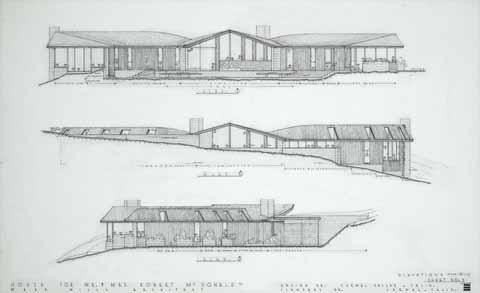
![Albert Janko house [perspective drawing]](/_flysystem/fedora/styles/large/fedora/2023-04/175-4-c-ff217-03-01.jpg?itok=MQd4FuIw)
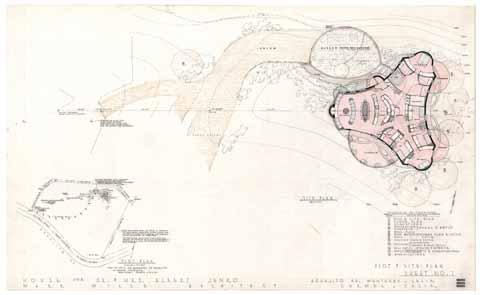
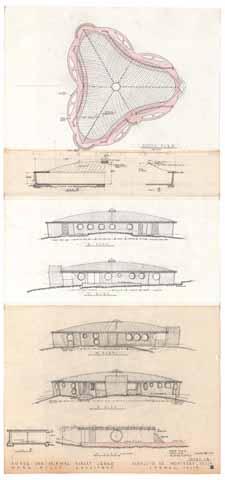

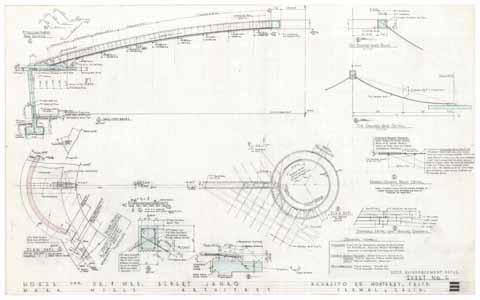

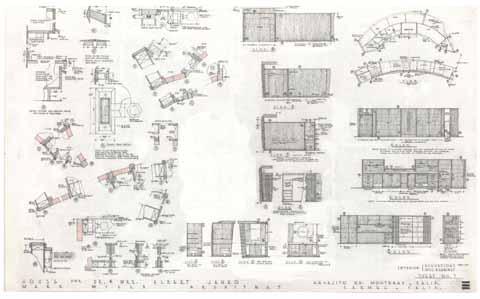
![[Shell House] construction, rooftop view, O'Brien, Mr. and Mrs. James, residential, Pebble Beach](/_flysystem/fedora/styles/large/fedora/2023-04/175-4-e-11-54-13.jpg?itok=7ibOgOxO)
![[Shell House] construction, elevated view towards ocean, O'Brien, Mr. and Mrs. James, residential, P](/_flysystem/fedora/styles/large/fedora/2023-04/175-4-e-11-54-09.jpg?itok=lkISJHUg)
![[Shell House] construction, rooftop view, O'Brien, Mr. and Mrs. James, residential, Pebble Beach](/_flysystem/fedora/styles/large/fedora/2023-04/175-4-e-11-54-06.jpg?itok=i1h-pV4I)



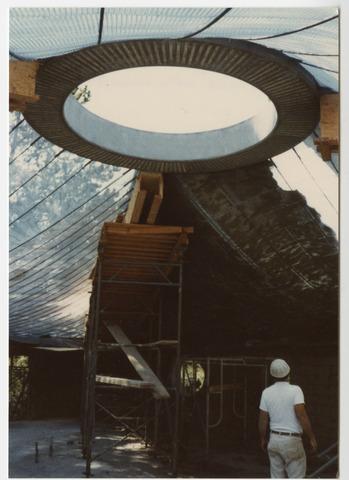
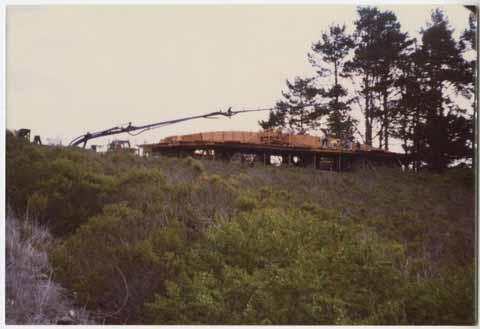
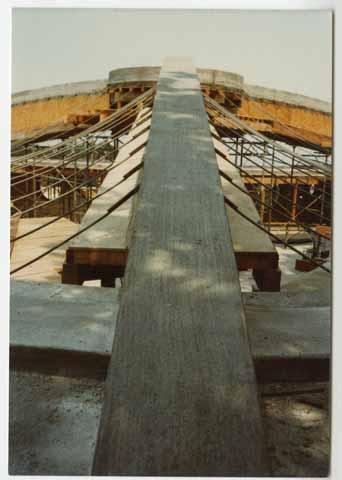

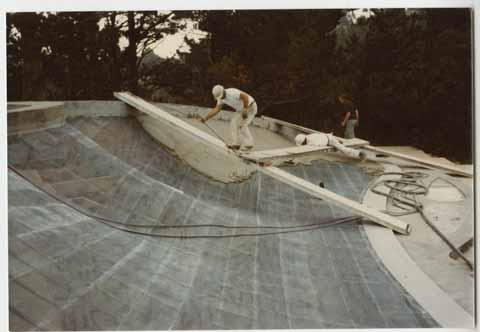

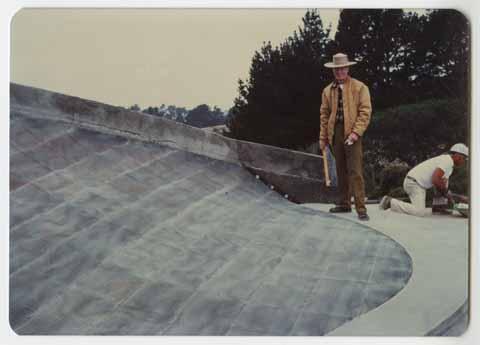
![[Shell House] construction, views towards ocean, O'Brien, Mr. and Mrs. James, residential, Pebble Be](/_flysystem/fedora/styles/large/fedora/2023-04/175-4-e-11-54-08.jpg?itok=v5lalbiW)
![[Shell House] construction, southeast view, O'Brien, Mr. and Mrs. James, residential, Pebble Beach](/_flysystem/fedora/styles/large/fedora/2023-04/175-4-e-11-54-07.jpg?itok=wS9Mruhu)
![[Shell House] construction, rooftop view, O'Brien, Mr. and Mrs. James, residential, Pebble Beach](/_flysystem/fedora/styles/large/fedora/2023-04/175-4-e-11-54-05.jpg?itok=qdAAstqE)
![[Shell House] Interior view looking towards kitchen from dining room, O'Brien, Mr. and Mrs. James, r](/_flysystem/fedora/styles/large/fedora/2023-04/175-4-e-11-54-10.jpg?itok=EzRTQrNH)
![[Shell House] construction, front view, O'Brien, Mr. and Mrs. James, residential, Pebble Beach](/_flysystem/fedora/styles/large/fedora/2023-04/175-4-e-11-54-12.jpg?itok=ZDIXnC9o)
![[Shell House] construction, rooftop view, O'Brien, Mr. and Mrs. James, residential, Pebble Beach](/_flysystem/fedora/styles/large/fedora/2023-04/175-4-e-11-54-14.jpg?itok=p2MHArwU)
![[Shell House] construction and excavation of site, O'Brien, Mr. and Mrs. James, residential, Pebble](/_flysystem/fedora/styles/large/fedora/2023-04/175-4-e-11-54-11.jpg?itok=NJ4aJFBD)

